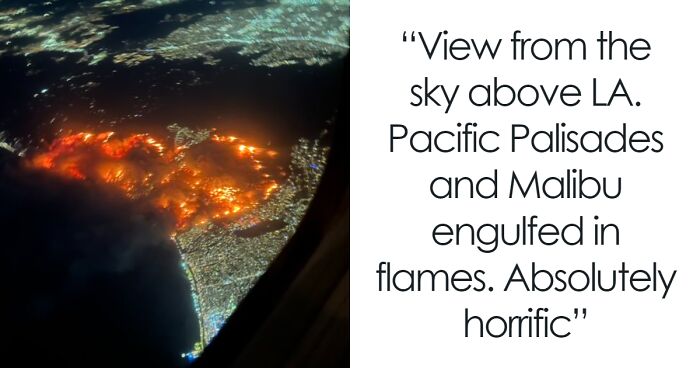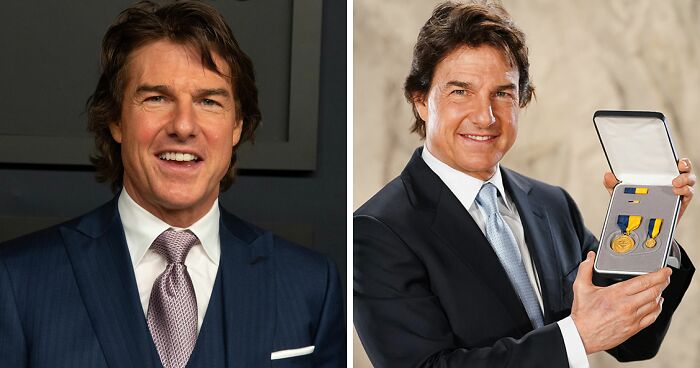If you’re on the hunt for a dog that’s equal parts adorable and intelligent, then look no further than the Aussiedoodle breed. From their playful and friendly demeanor to their hypoallergenic coat, Aussiedoodles have got it all.
So, if you’re curious to learn more about the lovable fur balls taking the dog world by storm, then this article is for you. We’ve got all the Aussiedoodle dog breed information you need!
- Crossbreed of Australian Shepherd and Poodle
- Can be intelligent and hypoallergenic
- Known for their affectionate and loyal temperament
- Require regular exercise and mental engagement
The information provided herein is for informational purposes only. Please refer to our disclaimer for more details..
- Fun facts about Aussiedoodles
- Breed characteristics: The Aussiedoodle at a glance
- Brief history of this dog breed
- How big do they get?
- Ausiedoodle temperament
- Aussiedoodle health
- Aussiedoodle general care
- Aussiedoodle grooming
- Dog training for Aussiedoodle breed
- 4 things to consider before getting an Aussiedoodle
- Frequently asked questions
Fun facts about Aussiedoodles
The Aussiedoodle is sometimes called an Aussiepoo, Aussiepoodle, or Australian Poodle.
The Aussiedoodle is a cross between an Australian Shepherd and a Poodle.
They make great therapy dogs due to their intelligence and affectionate nature.
They have lots of energy and love to play in water.
The Aussiedoodle is a relatively new breed. They were created in the 1980s by breeders that make designer dogs.
Typically, Australian shepherds and Poodles don’t naturally mate.
Aussiedoodles love bouncing and can jump over tall fences and gates while playing.
Unlike their parent breed, the Australian shepherd, Aussiepoos rarely have heterochromasia. However, these particular dogs are known to have the most beautiful eye colors.
This dog breed is so perceptive that some owners swear that they have mind-reading abilities.
The Aussiedoodle coat may change in color and texture as it develops.
Breed characteristics: The Aussiedoodle at a glance
Image source: Jake Green
Origin: North America, 1980’s
Parent Breeds: Poodle and Australian Shepherd
Breed Group: Designer dogs
Height: 14-23 inches
Weight: 15-70 pounds
Coat Type: Wavy, silky, or curly-haired coat
Coat Colors: They come in different colors. The most common coat colors are blue merle, red merle, black, white, and chocolate.
Life span: Average of 12 years.
Temperament: Affectionate, loyal, and intelligent dogs
Shedding: Typically, they are low shedders. Although, their shedding frequency depends on the coat type that they have.
Activity Levels: This is a high-energy dog breed. They require enough exercise and mental stimulation.
Brief history of this dog breed
The Australian Shepherd is a designer breed created by breeders in North America in the 1980s. These dogs are a cross between the Australian shepherd and the Poodle and they eventually gained popularity between the 1990s and early 2000s.
The Aussiedoodle dog breed was created to combine certain desired qualities in both dogs. From the Australian Shepherd, this breed got its hard-working and protective nature. On the other hand, this breed is intelligent and hypoallergenic just like the Poodle.
The first Aussiedoodles were created as a mix between Australian Shepherds and Standard Poodles. However, breeders have now started experimenting with other Poodle sizes. This has led to a wide range in the sizes of Aussiedoodles created.
Since these dogs have only been bred for two decades, they have a very short history. However, their popularity continues to grow.
How big do they get?
Image source: Julian Hochgesang
Aussiedoodles usually weigh 25-70 pounds and are considered small to medium dogs. Their size depends on the size of their Poodle parent and the traits of the individual dog. The Poodle parent not only influences the size but also the time it’ll take such a dog to grow into its full size.
For now, Aussiedoodles come in three major sizes. These are:
Standard: Standard Aussiedoodles are the largest size. They stand 15-22 inches, weigh about 44-70 pounds, and typically take 16 months to grow to maximum full size.
Miniature: Sometimes called Mini or medium Aussiedoodles. They usually stand 12-15 inches at the shoulder, weigh 15-44 pounds, and take about 13 months to become fully grown.
Tiny or Toy: These are the smallest in size. They stand around 10-12 inches tall, weigh 6-12 pounds, and take about 11 months to reach their full size.
Ausiedoodle temperament
Ausiedoodles are friendly dogs with lots of love to give. They are total goofballs that are completely devoted to their humans. They have the lively demeanor of the Australian Shepherd while maintaining the intelligence of the Poodle.
Inheriting the loyal and affectionate traits of both parent breeds, Aussiedoodles make great family pets. They are natural people pleasers, and this trait makes them easy to train. Note, however, that Aussiedoodles are quite protective of their family members and may let out a bark or two when they feel threatened. However, these dogs are not considered an aggressive breed.
Aussiepoos are smart dogs and teaching your Aussiedoodle commands can be quite enjoyable. They are also empathetic dogs, and this makes them amazing for therapy. In fact, the Aussiedoodle is so observant that some owners are convinced that they can read minds.
Because they originate from herding dogs, this breed is also highly energetic. Due to this, Aussiedoodles require regular engagement to keep boredom at bay. If you’re looking for an active pet to take to the dog park, on long walks, and have great playtime with, this is the breed for you!
Aussiedoodle health
Like many crossbreeds, Aussiedoodles benefit from hybrid vigor. They are typically healthy dogs that have very few health issues. However, due to being a crossbreed, these dogs may be affected by genetic health problems seen in both Poodles and Australian Shepherds.
Some common health conditions that Aussiedoodles may deal with include:
- Hip dysplasia
- Progressive retinal atrophy
- Sebaceous adenitis
- Glaucomas
Aussiedoodles may also have a multi-drug resistant gene (MDR1) which makes them sensitive to most anti-parasitic drugs, especially ivermectin. Due to their genetic makeup, they also suffer from a lot of eye problems.
Just like other dogs, members of this breed need proper care and regular veterinary checkups to stay healthy. Aussiedoodles also need proper feeding, regular exercise, grooming, socialization, and training to remain happy and thrive!
Aussiedoodle general care
Basic care for dogs involves many aspects including feeding, hydration, mental stimulation, and physical activity.
Feeding: Dogs should be fed a balanced diet that meets their nutritional needs. This can be achieved through a high-quality commercial dog food or a homemade diet recommended by a veterinarian.
Hydration: Ausiedoodles need access to clean, fresh water at all times. Dehydration can be dangerous, especially during hot weather or after exercise.
Mental stimulation: Aussiepoos need mental stimulation to prevent boredom and behavioral issues. To counter this, pet parents should provide interactive toys, puzzle feeders, and training activities. You could also take your Aussiedoodle for a walk in the park every now and then to ensure regular socialization with other dogs and people.
Physical activity: Regular exercise is crucial for an Aussiedoodle’s physical and mental well-being. This could look like taking daily walks, playtime, and engaging in dog sports.
In addition to these basic care aspects, Aussiedoodles need regular grooming, veterinary care, and a comfortable living environment. Providing love and attention is also essential for their overall well-being.
Aussiedoodle grooming
Image source: David Frye
Aussiedoodles can vary in their coat patterns and textures depending on their parents. Therefore, an Aussiedoodles grooming regimen will depend largely on the coat type they have. These dogs require regular grooming sessions to prevent their fur from matting and tangling.
Typically, you should aim to brush an Aussiedoodle’s hair daily with a slicker brush or comb. Also, due to the long hair on their feet, these dogs need their nails constantly trimmed to a comfortable length. There’s no set timing for this so it’s best to regularly check for overgrowth and trim the nails with a dog nail clipper.
According to Spruce Pets, you should bath your dog every month. The frequency of bath times for these dogs may depend on their lifestyle, coat type, and health conditions. However, when you do bathe your Aussiedoodle, make sure to use a mild dog shampoo and avoid getting it into your dog’s eyes and ears.
Because of their long ears, these dogs are somewhat prone to ear infections. To prevent this, they need their ears cleaned, when necessary, with a cleaning solution and a cotton pad. Check their ears weekly and consult your veterinarian if you suspect that anything is wrong.
Dog training for Aussiedoodle breed
Because Aussiedoodles are intelligent and natural people pleasers, training your Aussiedoodle should be an exciting and rewarding experience. It’s important to train and socialize them early so that your Aussiedoodle develops into a well-behaved and well-adjusted member of your family as soon as possible.
Members of this breed respond well to positive reinforcement methods, such as praise, treats, and playtime. Incorporating mental stimulation into your aussiedoodle’s training regimen is also crucial to keep their sharp minds engaged and prevent boredom and destructive behaviors.
With the right approach, patience, and consistency, you’ll have a well-trained Aussiedoodle who is a joy to be around and a faithful companion for years to come.
4 things to consider before getting an Aussiedoodle
1. Breeder selection
Get your Aussiedoodle from a reputable breeder. Your breeder should have adequate breed information and be able to answer basic questions. Getting a puppy or adult dog from an irresponsible breeder can lead to health issues and various behavioral problems.
Verify the breeder’s reputation by checking the health clearance and certifications of parent dogs and pups. Also, take a look at the living conditions of the dogs to make sure that they are healthy.
You could also get your new dog from a shelter or rescue. Here are some rescues that you can try:
2. Consider your living space and lifestyle compatibility
While they can adapt to different living environments, Aussiedoodles are not ideally apartment dogs. They are active dogs that need space to play and exercise.
Aussiedoodles are great dogs but they are not for everyone. If you don’t have an active lifestyle or are a first-time dog owner, this dog may not be the right choice for you.
3. Look out for allergies
Due to their Poodle lineage, Aussiedoodles are considered hypoallergenic. However, no dog is completely hypoallergenic, and this breed can affect people with allergies. This is especially common for those who are sensitive to pet dander or saliva.
Before getting your Aussiedoodle, consult an allergist.
Frequently asked questions
How much is an Aussiedoodle puppy?
According to PetKeen, adopting an Aussiedoodle from a shelter or rescue can cost between $150 to $600. On the other hand, getting an Aussiedoodle from a breeder typically costs between $600 to $3,500, but it can go up to $5,000 for show-quality dogs.
Are mixed breed dogs healthier than purebred dogs?
It is believed that mixed-breed dogs often benefit from hybrid vigor. This means that because their gene pool is diverse, they have better health. However, the health of mixed-breed dogs compared to purebred dogs still remains a complex topic with many different viewpoints.
395views
Share on Facebook
 Dark Mode
Dark Mode 

 No fees, cancel anytime
No fees, cancel anytime 





























-3
0